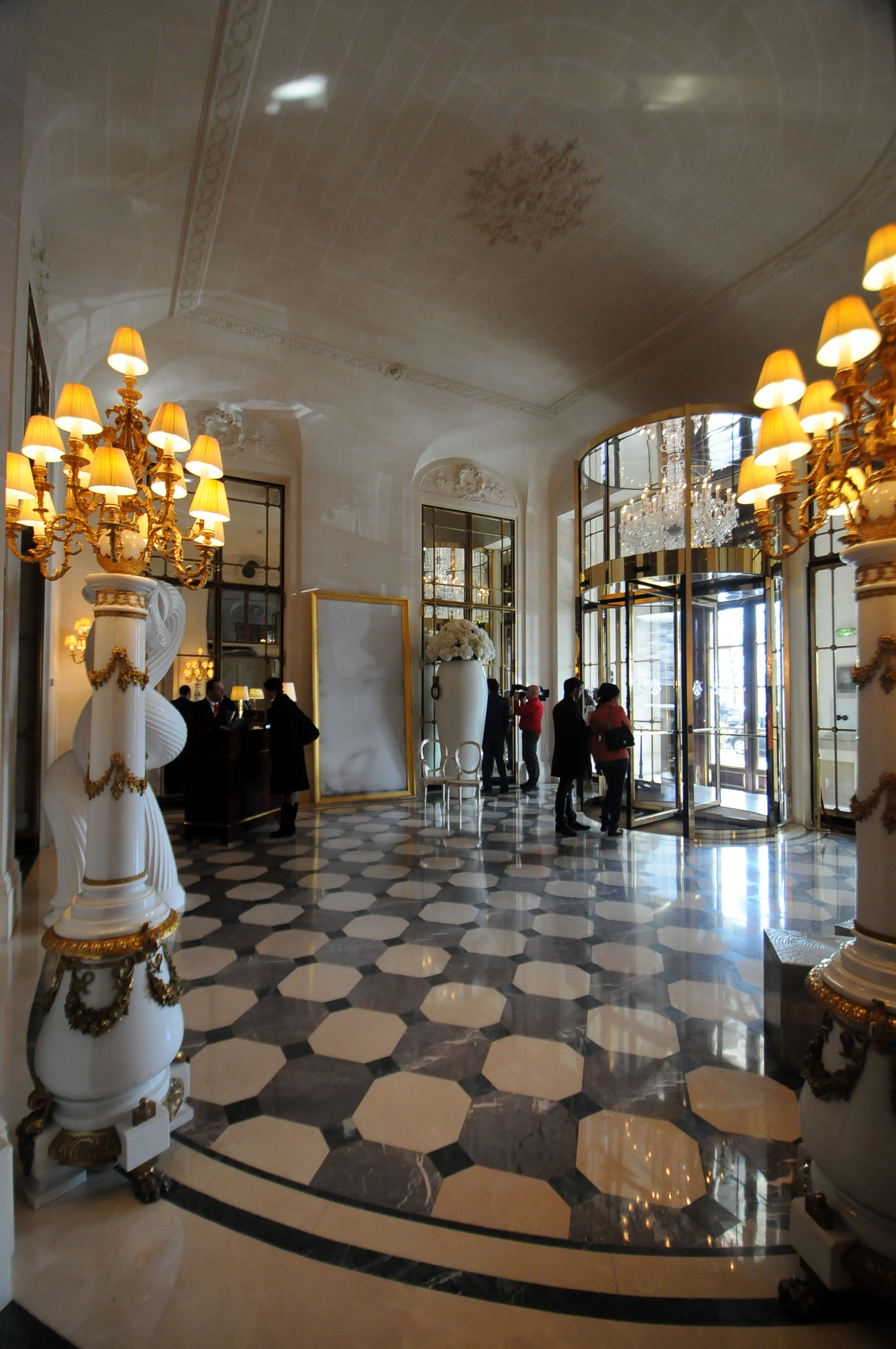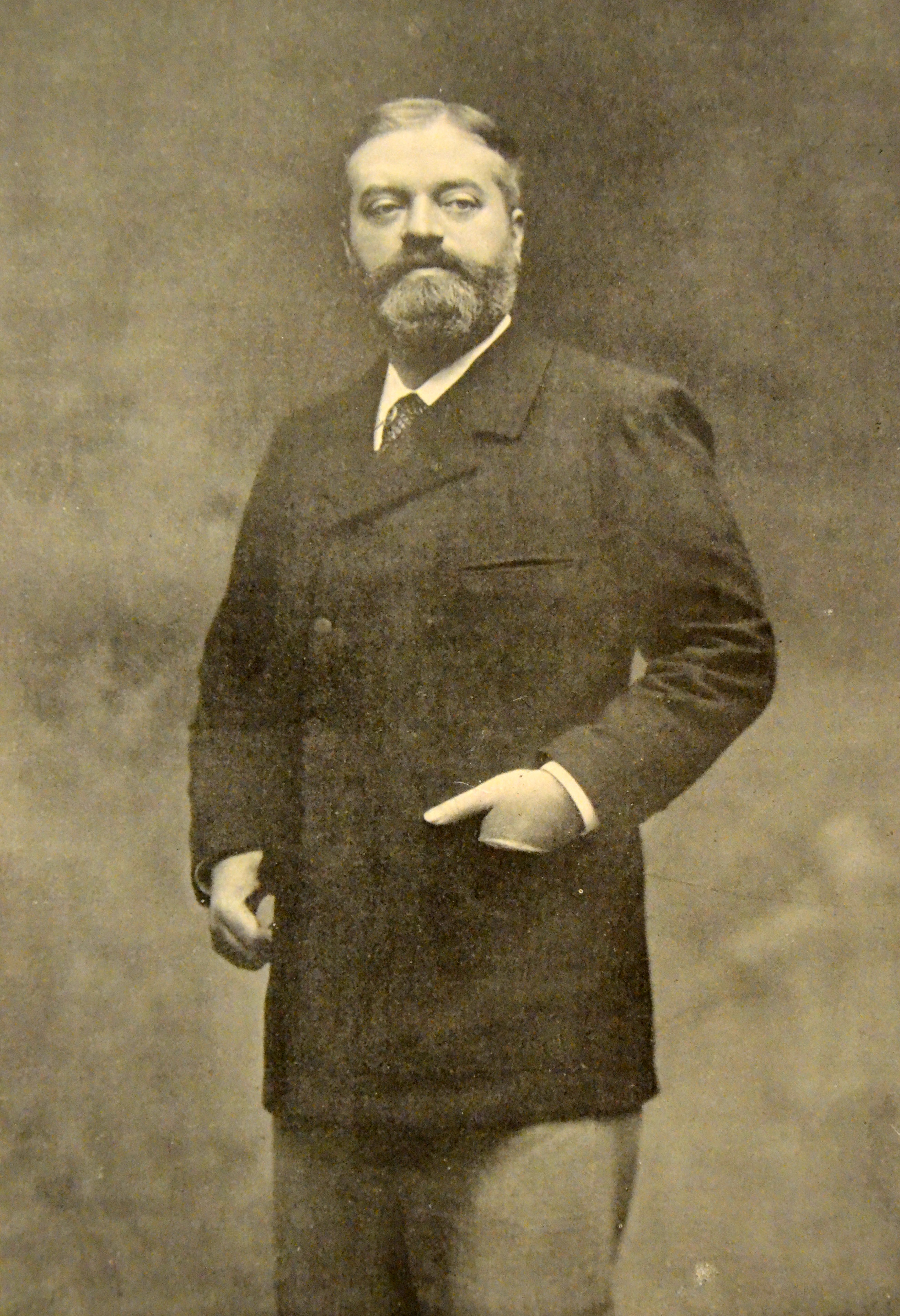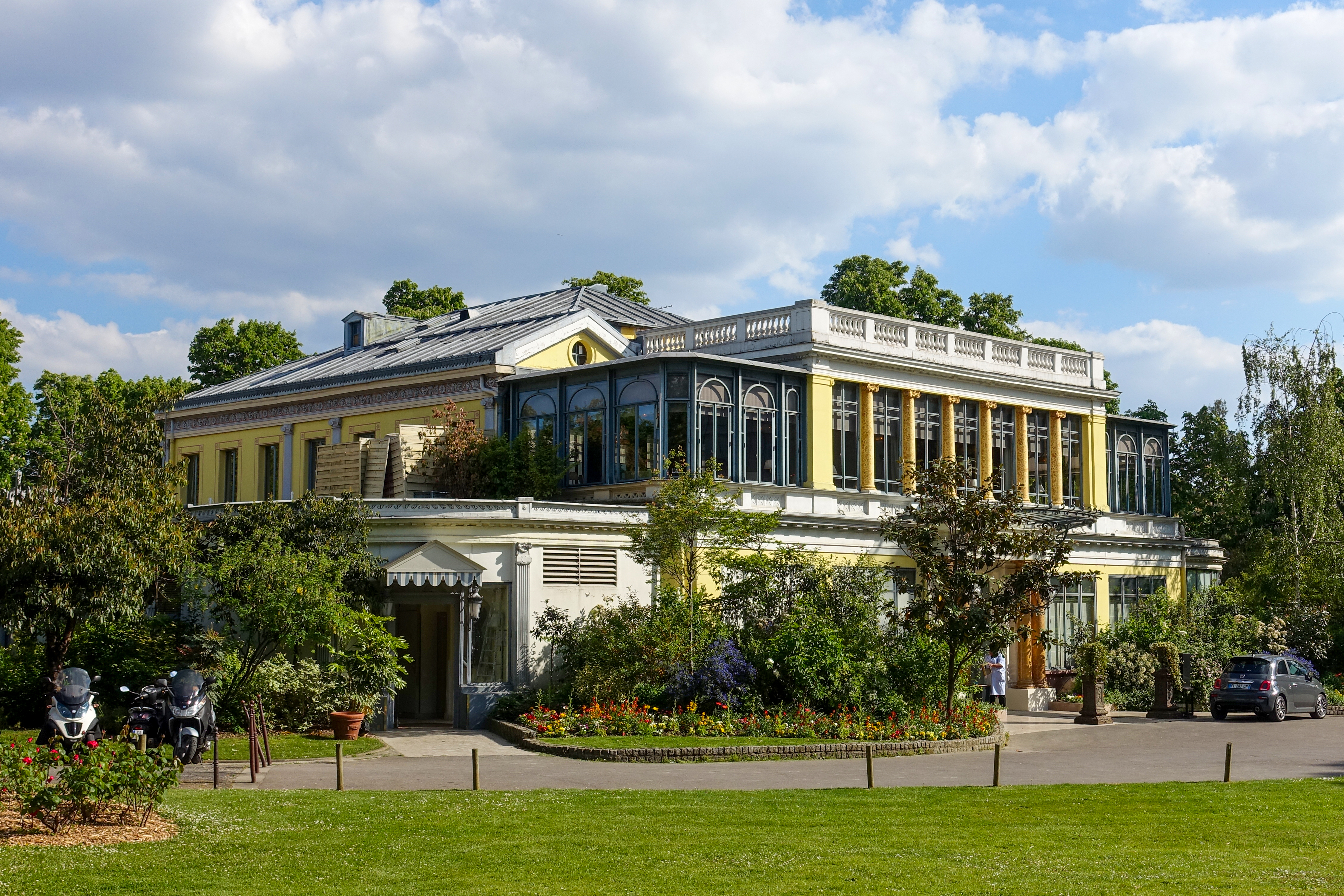 |
Hotel Meurice
Le Meurice () is a Brunei-owned five-star luxury hotel in the 1st arrondissement of Paris opposite the Tuileries Garden, between Place de la Concorde and the Musée du Louvre on the Rue de Rivoli. From the Rue de Rivoli, it stretches to the Rue du Mont Thabor. The hotel was opened in 1815. It received the "Palace" distinction from the French government in 2011. Le Meurice is owned and operated by the Dorchester Collection, a luxury hotel operator based in London. The hotel has a staff of over 400 and houses 160 rooms decorated in the Louis XVI style, which start at US$1,235 per night. History Early years In the mid-18th century, the French postmaster, Charles-Augustin Meurice (born 1738), understood that English tourists wanted to be on the continent with the comforts and conveniences they were used to at home. In 1771, Meurice opened a coach inn on Rue Edmond Roche in Calais, the Hôtel Meurice de Calais. In 1815, he opened the Hôtel Meurice in Paris, originally located a ... [...More Info...] [...Related Items...] OR: [Wikipedia] [Google] [Baidu] |
 |
1st Arrondissement Of Paris
The 1st arrondissement of Paris (''Ier arrondissement'') is one of the 20 arrondissements of the capital city of France. In spoken French, this arrondissement is colloquially referred to as ''le premier'' (the first). It is governed locally together with the 2nd, 3rd and 4th arrondissement, with which it forms the 1st sector of Paris ( Paris-Centre). Also known as ''Louvre'', the arrondissement is situated principally on the right bank of the River Seine. It also includes the west end of the Île de la Cité. The locality is one of the oldest areas in Paris, the Île de la Cité having been the heart of the city of Lutetia, conquered by the Romans in 52 BC, while some parts on the right bank (including Les Halles) date back to the early Middle Ages. It is the least populated of the city's arrondissements and one of the smallest by area, with a land area of only 1.83 km2 (0.705 sq. miles, or 451 acres). A significant part of the area is occupied by the Louvre Museum ... [...More Info...] [...Related Items...] OR: [Wikipedia] [Google] [Baidu] |
 |
Coaching Inn
The coaching inn (also coaching house or staging inn) was a vital part of Europe's inland transport infrastructure until the development of the railway, providing a resting point ( layover) for people and horses. The inn served the needs of travellers, for food, drink, and rest. The attached stables, staffed by hostlers, cared for the horses, including changing a tired team for a fresh one. Coaching inns were used by private travellers in their coaches, the public riding stagecoaches between one town and another, and (in England at least) the mail coach. Just as with roadhouses in other countries, although many survive, and some still offer overnight accommodation, in general coaching inns have lost their original function and now operate as ordinary pubs. Coaching inns stabled teams of horses for stagecoaches and mail coaches and replaced tired teams with fresh teams. In America, stage stations performed these functions. Traditionally English coaching inns were seven mi ... [...More Info...] [...Related Items...] OR: [Wikipedia] [Google] [Baidu] |
 |
Louis XVI
Louis XVI (''Louis-Auguste''; ; 23 August 175421 January 1793) was the last King of France before the fall of the monarchy during the French Revolution. He was referred to as ''Citizen Louis Capet'' during the four months just before he was executed by guillotine. He was the son of Louis, Dauphin of France, son and heir-apparent of King Louis XV, and Maria Josepha of Saxony. When his father died in 1765, he became the new Dauphin. Upon his grandfather's death on 10 May 1774, he became King of France and Navarre, reigning as such until 4 September 1791, when he received the title of King of the French, continuing to reign as such until the monarchy was abolished on 21 September 1792. The first part of his reign was marked by attempts to reform the French government in accordance with Enlightenment ideas. These included efforts to abolish serfdom, remove the ''taille'' (land tax) and the '' corvée'' (labour tax), and increase tolerance toward non-Catholics as well as ab ... [...More Info...] [...Related Items...] OR: [Wikipedia] [Google] [Baidu] |
 |
Prix De Rome
The Prix de Rome () or Grand Prix de Rome was a French scholarship for arts students, initially for painters and sculptors, that was established in 1663 during the reign of Louis XIV of France. Winners were awarded a bursary that allowed them to stay in Rome for three to five years at the expense of the state. The prize was extended to architecture in 1720, music in 1803 and engraving in 1804. The prestigious award was abolished in 1968 by André Malraux, then Minister of Culture, following the May 68 riots that called for cultural change. History The Prix de Rome was initially created for painters and sculptors in 1663 in France, during the reign of Louis XIV. It was an annual bursary for promising artists having proved their talents by completing a very difficult elimination contest. To succeed, a student had to create a sketch on an assigned topic while isolated in a closed booth with no reference material to draw on. The prize, organised by the Académie Royale de Peintur ... [...More Info...] [...Related Items...] OR: [Wikipedia] [Google] [Baidu] |
 |
Henri Paul Nénot
Henri Paul Nénot (27 May 1853 – 1934) was a noted French architect. Biography Nénot was born in Paris. After his initial training in an architectural workshop, he entered the studio of Charles-Auguste Questel at the École Nationale Supérieure des Beaux-Arts while also working for various architects, including Charles Garnier. He was in residence at the Villa Medici 1878–1881. In 1882 Nénot began his career, during which he was appointed architect of the Sorbonne, which remains his great work, as well as designing other university buildings in Paris and a number of private residential and commercial buildings. In 1895 he was elected department chair for architecture in the Académie des beaux-arts. His last position was Director General for the architecture of the Palace of Nations in Geneva, where he died in an accident. Principal works * 1875: école normale d' Huy in Belgium, with sculptor Eugène André Oudiné * 1882–1901: new Sorbonne, 5th arrondissemen ... [...More Info...] [...Related Items...] OR: [Wikipedia] [Google] [Baidu] |
|
Frédéric Schwenter
Frédéric and Frédérick are the French versions of the common male given name Frederick. They may refer to: In artistry: * Frédéric Back, Canadian award-winning animator * Frédéric Bartholdi, French sculptor * Frédéric Bazille, Impressionist painter best known for his depiction of figures * Frédéric Mariotti, actor In politics: * Frédéric Bamvuginyumvira, 1st Vice-President of Burundi * Frédéric Ngenzebuhoro, Vice-President of Burundi from 11 November 2004 to 26 August 2005 * Frédéric Bastiat, political economist and member of the French assembly In literature: * Frédéric Beigbeder, French writer, commentator critic and pundit * Frédéric Berat, French poet and songwriter * Frédéric Mistral, French poet In science: * Frédéric Cailliaud, French mineralogist * Frédéric Joliot-Curie, French physicist and Nobel laureate In sport: * Frédéric Bourdillon (born 1991), French-Israeli basketball player in the Israel Basketball Premier League * Frédér ... [...More Info...] [...Related Items...] OR: [Wikipedia] [Google] [Baidu] |
|
 |
Restaurant Ledoyen
Alléno Paris au Pavillon Ledoyen, in the square gardens in the eastern part of the Champs-Élysées in the 8th arrondissement, is one of the oldest restaurants in Paris. Its long history places it on the Champs-Élysées before the street's beautification. In a two-storey pavilion with gardens, Ledoyen is considered to be one of Paris's best gourmet restaurants, and boasts three Michelin stars. The building is owned by the City of Paris. It is operated by the company, "Carré des Champs Elysées". History Initially, it began in 1779 as a very small inn named ''Au Dauphin''. It was near the Place Louis XV (current Place de la Concorde), near the Café des Ambassadeurs (between Avenue des Champs-Élysées and the current Avenue Gabriel). At that time it was a country inn on the outskirts of Paris and cows grazed in the fields outside. On 4 August 1791, Pierre-Michel Ledoyen, a son of caterers, rented it and established it as a formal restaurant. Ledoyen, a dishwasher in hi ... [...More Info...] [...Related Items...] OR: [Wikipedia] [Google] [Baidu] |
|
Café De La Paix
The Café de la Paix () is a famous café located on the northwest corner of the intersection of the Boulevard des Capucines and the Place de l'Opéra, in the 9th arrondissement of Paris, 9th arrondissement of Paris, France. Designed in the Napoleon III style by the architect :fr:Alfred Armand, Alfred Armand, who also designed the historic InterContinental Paris Le Grand Hotel, Grand-Hôtel in which the café is located, its florid interior decorations, historic location, and high-profile clientele have all brought it international recognition as a site of great cultural significance. History The Café de la Paix was opened on 30 June 1862 to serve the Grand-Hôtel de la Paix, whose name was later shortened to Le Grand-Hôtel. Both were constructed as part of Haussmann's renovation of Paris, with financing from the wealthy Pereire brothers, Pereire Brothers. It first gained an international reputation by servicing visitors to the International Exposition (1867), International Ex ... [...More Info...] [...Related Items...] OR: [Wikipedia] [Google] [Baidu] |
|
|
Arthur Millon
Arthur is a common male given name of Brythonic origin. Its popularity derives from it being the name of the legendary hero King Arthur. The etymology is disputed. It may derive from the Celtic ''Artos'' meaning “Bear”. Another theory, more widely believed, is that the name is derived from the Roman clan '' Artorius'' who lived in Roman Britain for centuries. A common spelling variant used in many Slavic, Romance, and Germanic languages is Artur. In Spanish and Italian it is Arturo. Etymology The earliest datable attestation of the name Arthur is in the early 9th century Welsh-Latin text ''Historia Brittonum'', where it refers to a circa 5th to 6th-century Briton general who fought against the invading Saxons, and who later gave rise to the famous King Arthur of medieval legend and literature. A possible earlier mention of the same man is to be found in the epic Welsh poem ''Y Gododdin'' by Aneirin, which some scholars assign to the late 6th century, though this is still a m ... [...More Info...] [...Related Items...] OR: [Wikipedia] [Google] [Baidu] |
|
|
French Third Republic
The French Third Republic (french: Troisième République, sometimes written as ) was the system of government adopted in France from 4 September 1870, when the Second French Empire collapsed during the Franco-Prussian War, until 10 July 1940, after the Fall of France during World War II led to the formation of the Vichy government. The early days of the Third Republic were dominated by political disruptions caused by the Franco-Prussian War of 1870–1871, which the Republic continued to wage after the fall of Emperor Napoleon III in 1870. Harsh reparations exacted by the Prussians after the war resulted in the loss of the French regions of Alsace (keeping the Territoire de Belfort) and Lorraine (the northeastern part, i.e. present-day department of Moselle), social upheaval, and the establishment of the Paris Commune. The early governments of the Third Republic considered re-establishing the monarchy, but disagreement as to the nature of that monarchy and the rightfu ... [...More Info...] [...Related Items...] OR: [Wikipedia] [Google] [Baidu] |
|
|
July Monarchy
The July Monarchy (french: Monarchie de Juillet), officially the Kingdom of France (french: Royaume de France), was a liberal constitutional monarchy in France under , starting on 26 July 1830, with the July Revolution of 1830, and ending 23 February 1848, with the Revolution of 1848. It marks the end of the Bourbon Restoration (1814–1830). It began with the overthrow of the conservative government of Charles X, the last king of the House of Bourbon. , a member of the more liberal Orléans branch of the House of Bourbon, proclaimed himself as (" King of the French") rather than "King of France", emphasizing the popular origins of his reign. The king promised to follow the ''juste milieu'', or the middle-of-the-road, avoiding the extremes of both the conservative supporters of Charles X and radicals on the left. The July Monarchy was dominated by wealthy bourgeoisie and numerous former Napoleonic officials. It followed conservative policies, especially under the influ ... [...More Info...] [...Related Items...] OR: [Wikipedia] [Google] [Baidu] |
|
 |
Tuileries Palace
The Tuileries Palace (french: Palais des Tuileries, ) was a royal and imperial palace in Paris which stood on the right bank of the River Seine, directly in front of the Louvre. It was the usual Parisian residence of most French monarchs, from Henry IV to Napoleon III, until it was burned by the Paris Commune in 1871. Built in 1564, it was gradually extended until it closed off the western end of the Louvre courtyard and displayed an immense façade of 266 metres. Since the destruction of the Tuileries, the Louvre courtyard has remained open and the site is now the location of the eastern end of the Tuileries Garden, forming an elevated terrace between the Place du Carrousel and the gardens proper. History Plan of Catherine de Medici (16th C.) The site of the Tuileries palace was originally just outside the walls of the city, in an area frequently flooded by the Seine as far as the present Rue Saint-Honore. The land was occupied by the workshops and kilns craftsmen who ... [...More Info...] [...Related Items...] OR: [Wikipedia] [Google] [Baidu] |